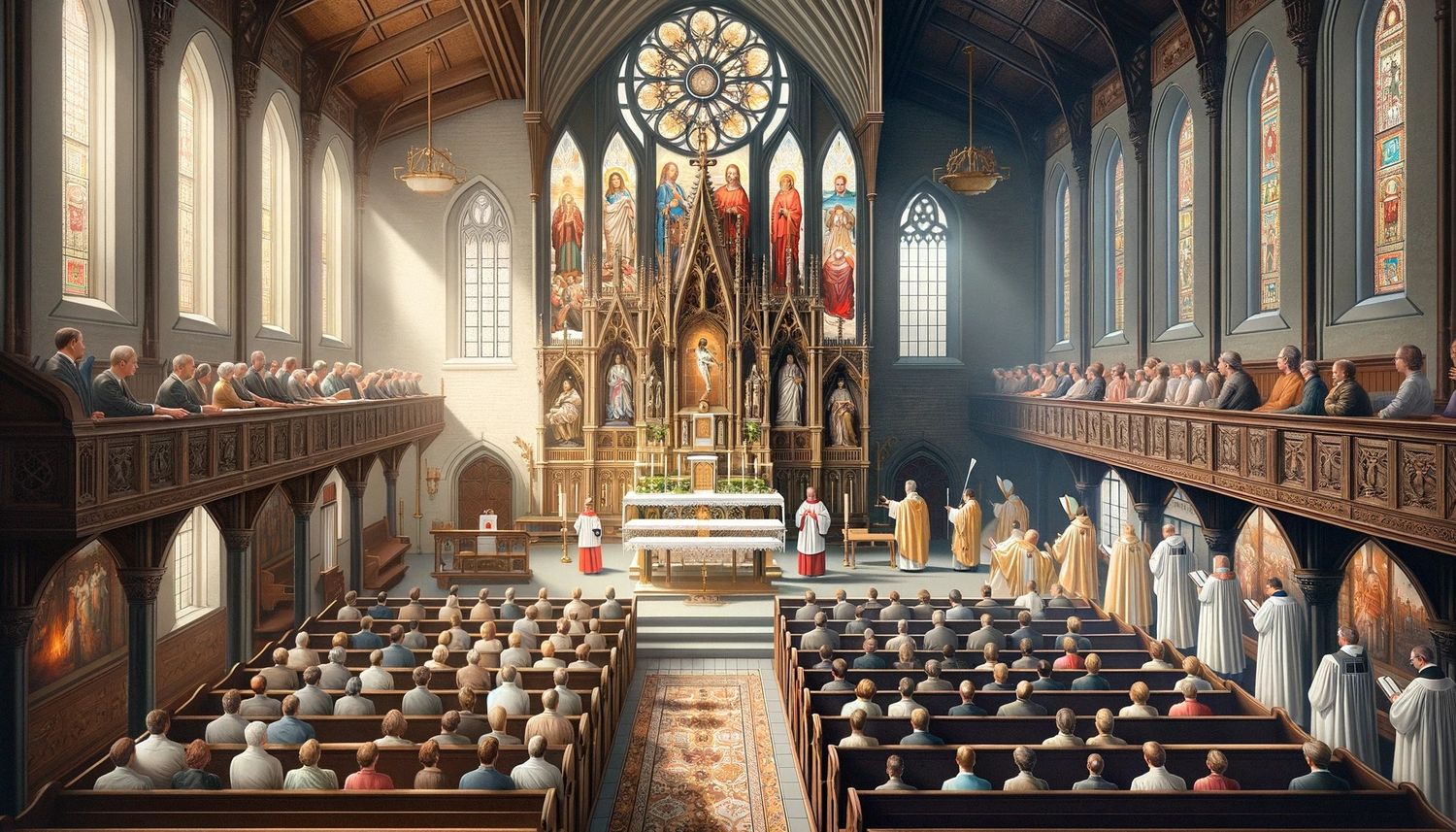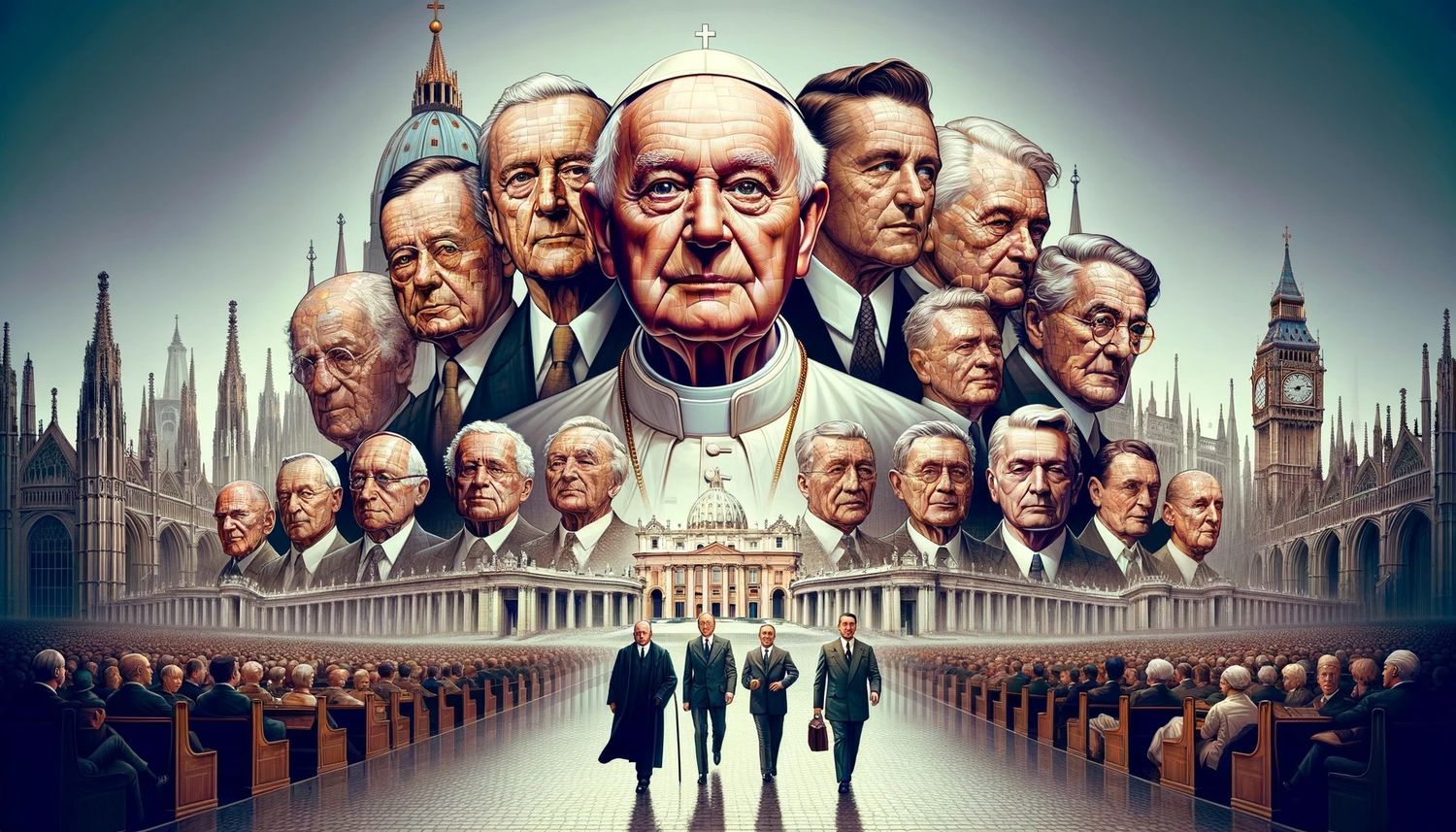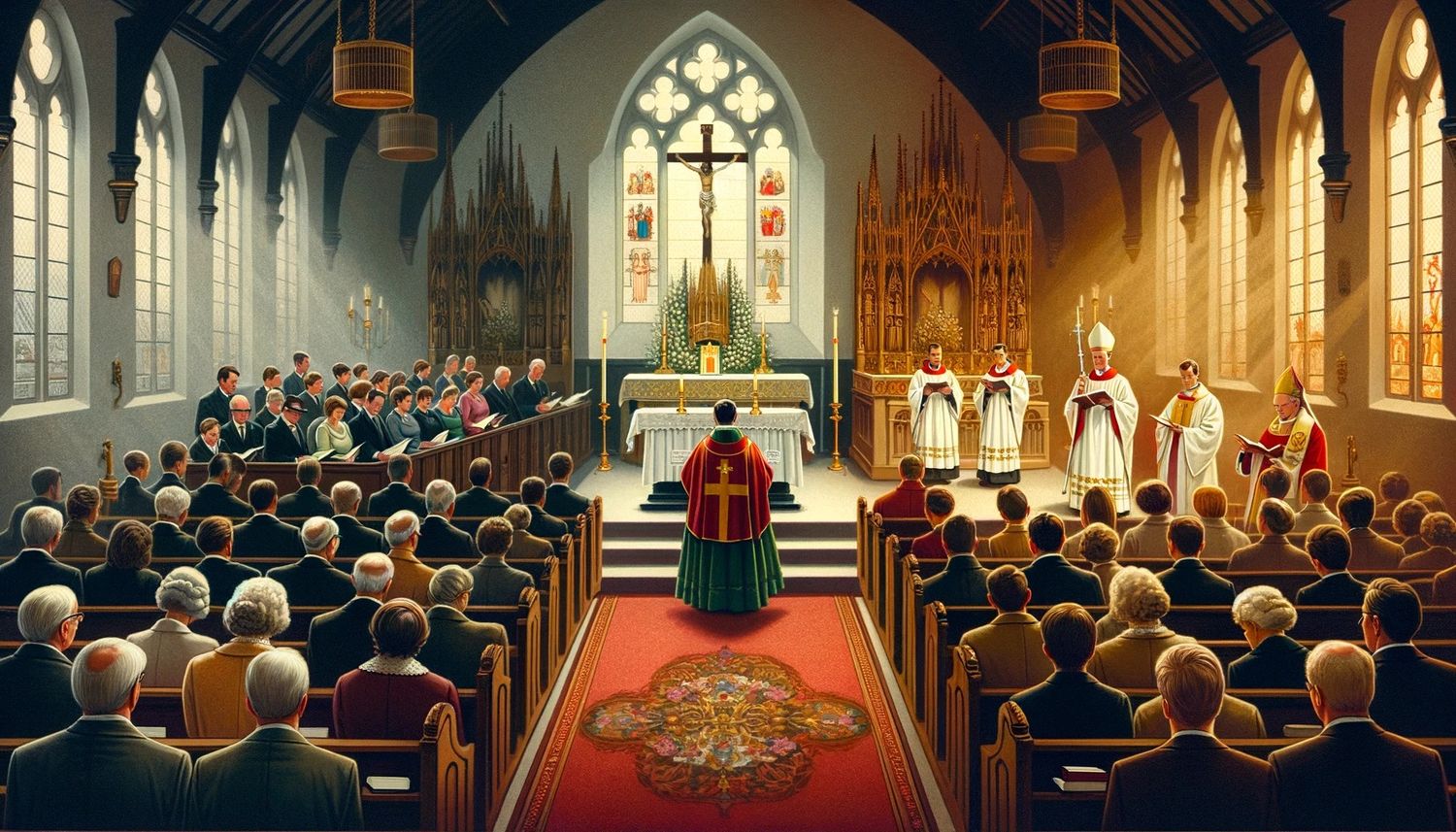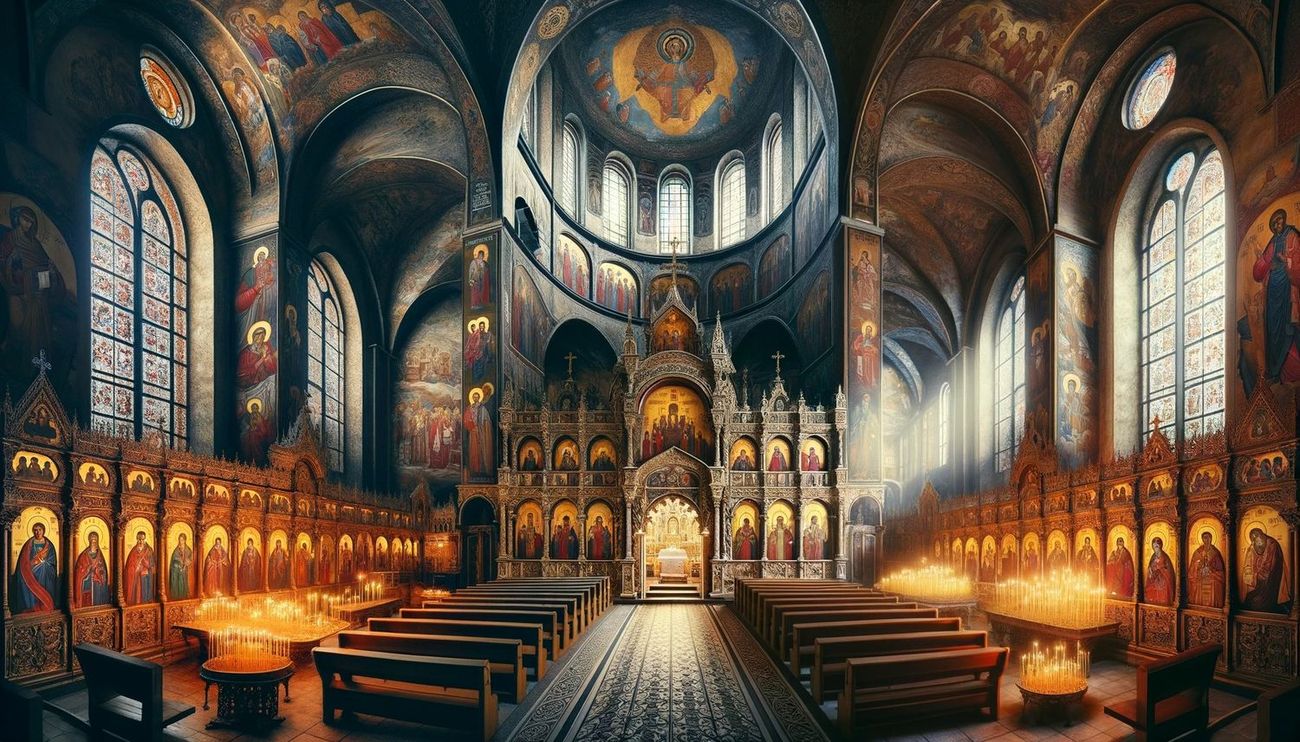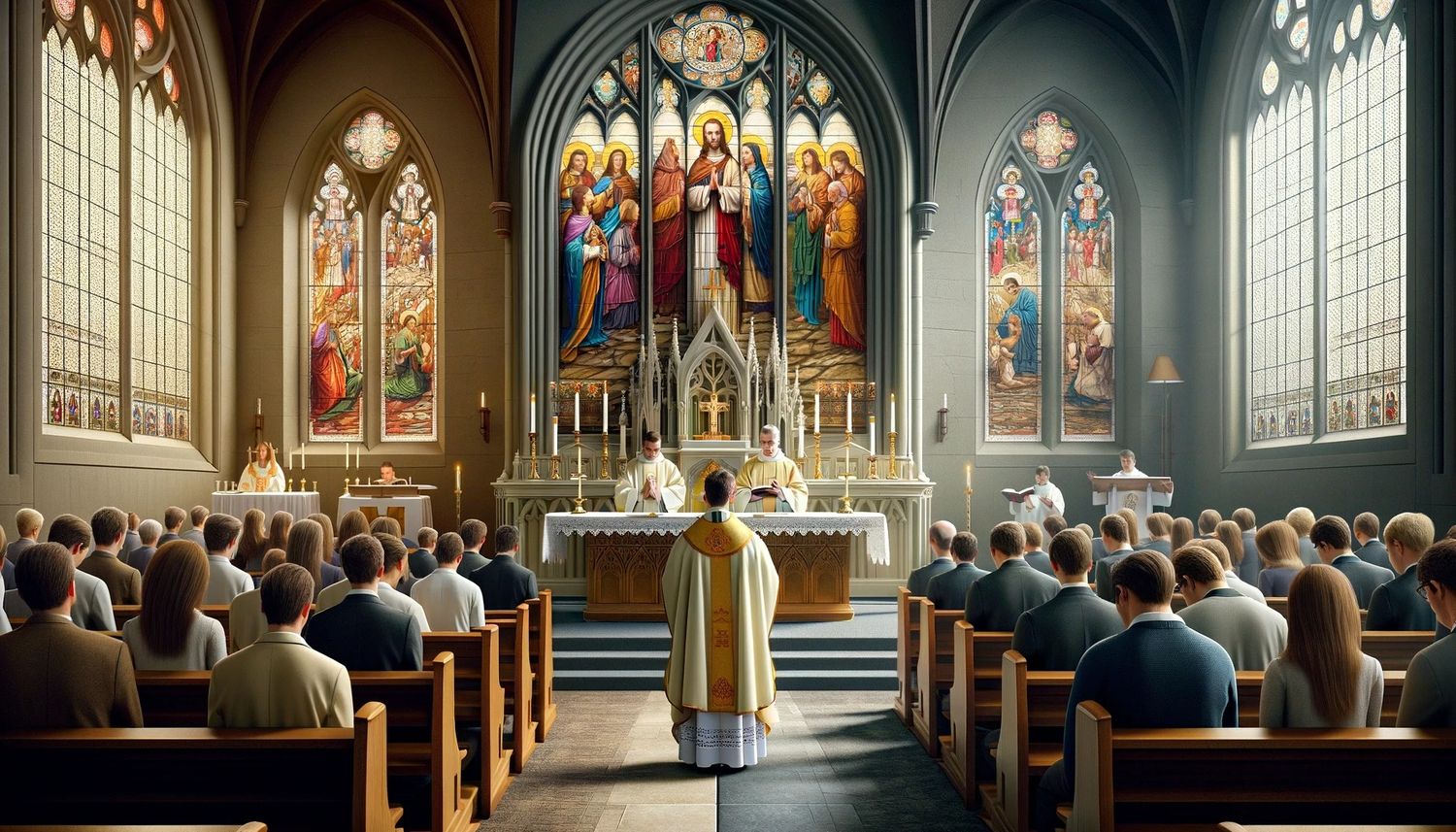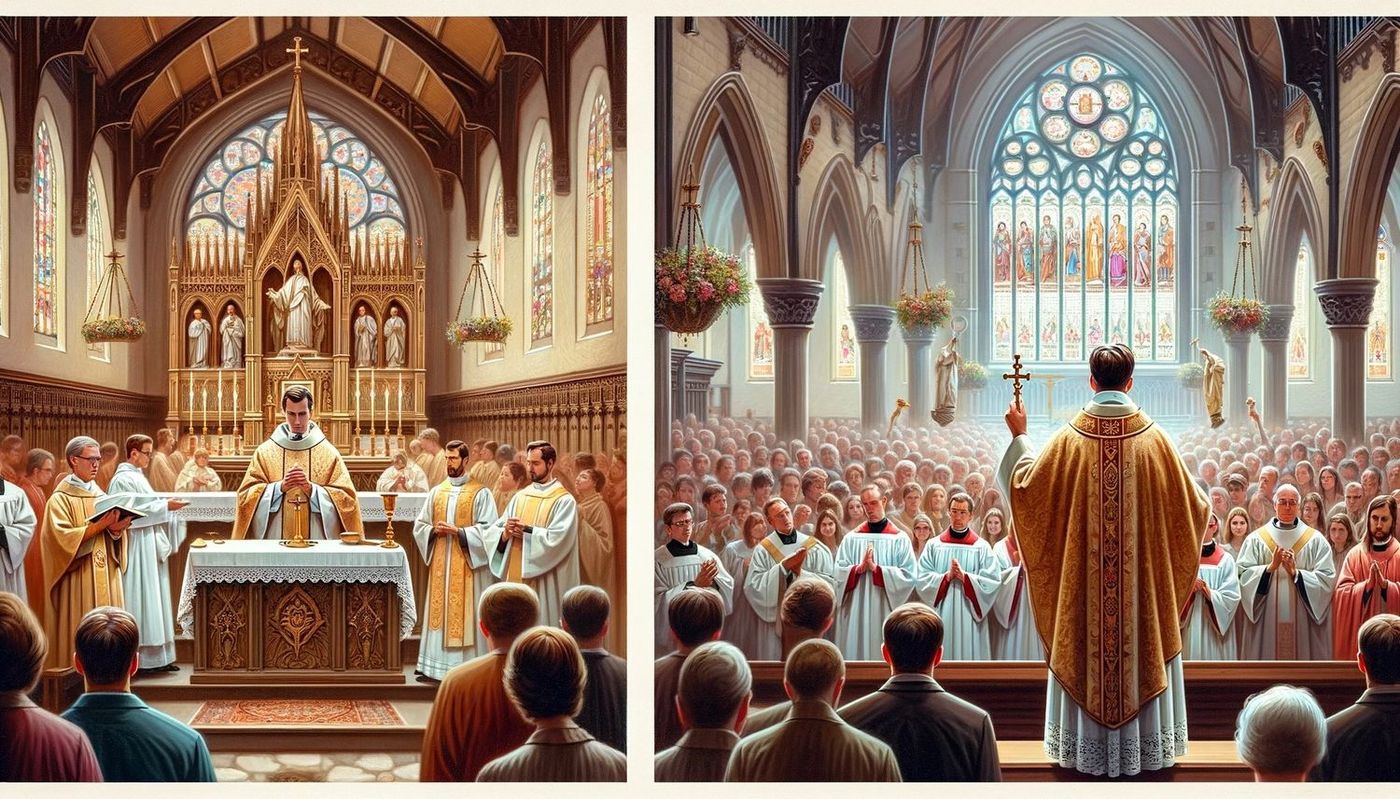Home>Theology and Spirituality>How Is Methodism Different From Catholicism
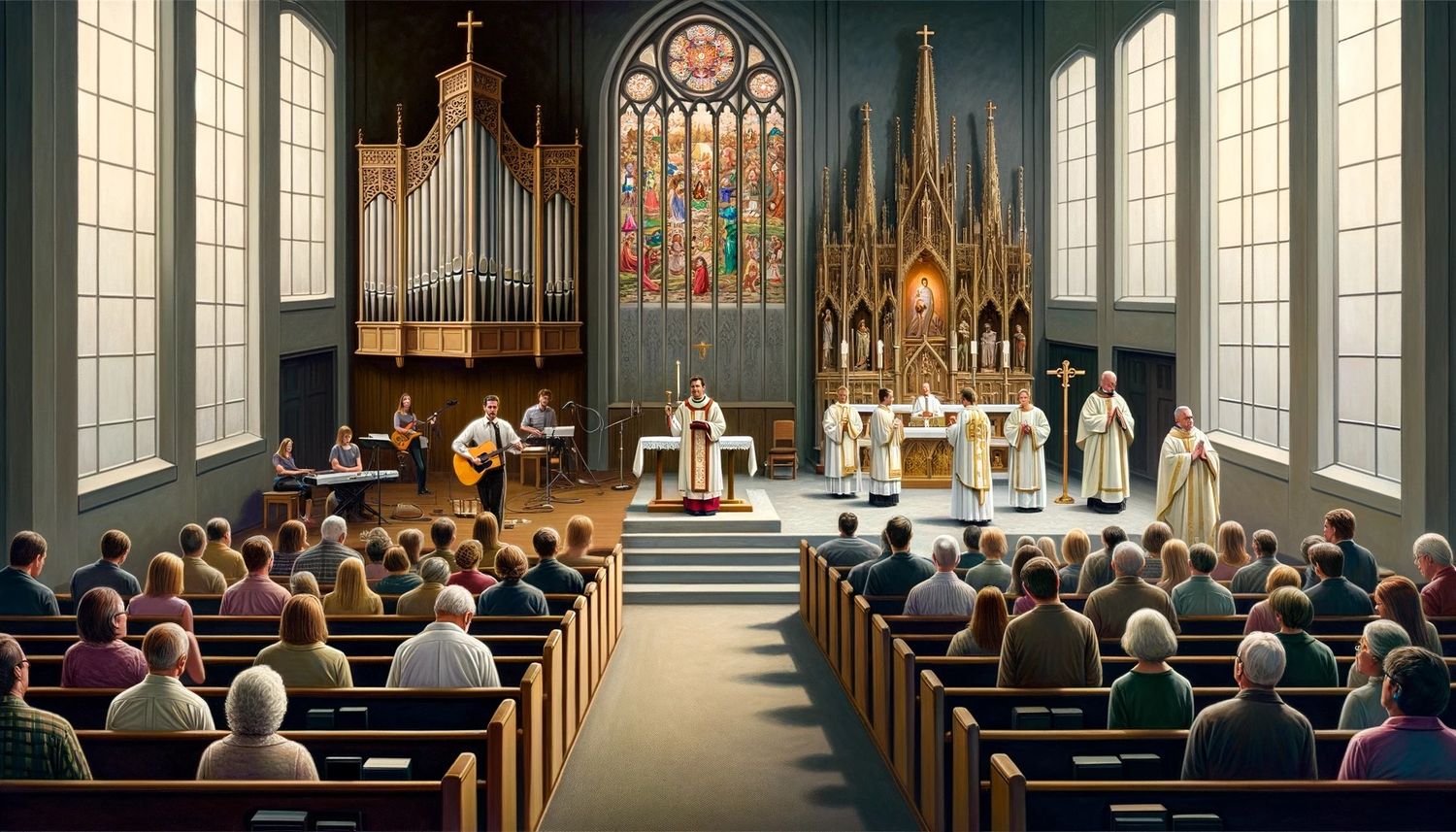

Theology and Spirituality
How Is Methodism Different From Catholicism
Published: February 15, 2024
Jason DeRose, Managing Editor at Christian.net, uses his expertise in religion and journalism to deepen understanding of faith's societal impacts. His editorial leadership, coupled with a strong academic background, enriches the platform’s diverse content, earning him recognition in both journalism and religious circles.
Discover the key differences between Methodism and Catholicism in terms of theology and spirituality. Explore their unique beliefs and practices.
(Many of the links in this article redirect to a specific reviewed product. Your purchase of these products through affiliate links helps to generate commission for Christian.net, at no extra cost. Learn more)
Table of Contents
Introduction
When exploring the rich tapestry of Christian traditions, it becomes evident that each denomination possesses its own unique characteristics, shaping the way its followers understand and practice their faith. Two prominent branches within Christianity, Methodism and Catholicism, stand out for their distinct theological perspectives, historical developments, and spiritual practices. Understanding the differences between these two traditions can provide valuable insights into the diverse expressions of Christian faith.
As we delve into the comparative analysis of Methodism and Catholicism, it is essential to recognize that both traditions share a common foundation in the teachings of Jesus Christ and the early Christian church. However, over the centuries, theological interpretations, ecclesiastical structures, and liturgical customs have evolved, giving rise to the distinctive identities of Methodism and Catholicism.
In this exploration, we will embark on a journey to unravel the nuanced theological nuances, spiritual ethos, and communal dynamics that set Methodism apart from Catholicism. By examining their beliefs and practices, understanding their views on authority and leadership, delving into their sacraments and worship, and exploring their perspectives on salvation, we will gain a deeper appreciation for the rich diversity within the Christian faith.
Through this comparative study, we aim to foster a spirit of understanding, respect, and dialogue, recognizing that while Methodism and Catholicism may diverge in certain aspects, they both contribute to the vibrant tapestry of Christian traditions. Let us embark on this enlightening journey to discern the distinctive features that shape the spiritual journeys of Methodists and Catholics, celebrating the beauty of diversity within the body of Christ.
Read more: How Are Calvinism And Catholicism Different
Beliefs and Practices
Methodism and Catholicism encompass distinct sets of beliefs and practices that reflect their theological orientations and spiritual emphases. These foundational elements shape the lived experiences of their adherents and inform the ways in which they engage with God, the church, and the world.
Methodism
Methodism, rooted in the Wesleyan theological tradition, places a strong emphasis on the concepts of prevenient grace, justifying grace, and sanctifying grace. This theological framework, articulated by John Wesley, the founder of Methodism, underscores the transformative work of God's grace in the lives of believers. Methodists believe in the universal reach of God's prevenient grace, which precedes human response and enables individuals to cooperate with God's saving work. Through justifying grace, believers experience forgiveness and reconciliation with God, while sanctifying grace empowers them to grow in holiness and love.
In terms of practices, Methodism upholds the significance of personal and communal piety. Methodists are encouraged to engage in spiritual disciplines such as prayer, Scripture reading, and acts of mercy, recognizing the vital role of these practices in nurturing a vibrant faith. Furthermore, the Methodist tradition places a strong emphasis on social justice and outreach, reflecting a commitment to addressing systemic injustices and caring for the marginalized.
Catholicism
Catholic beliefs are characterized by a sacramental worldview, emphasizing the efficacy of the sacraments as tangible signs of God's grace. The Catholic Church recognizes seven sacraments, including baptism, confirmation, Eucharist, reconciliation, anointing of the sick, holy orders, and matrimony. These sacraments are regarded as sacred rituals through which believers encounter the saving presence of Christ and are united with the community of faith.
In terms of practices, Catholicism places a strong emphasis on liturgical worship, with the celebration of the Eucharist occupying a central role in the life of the Church. The Mass, marked by its rich symbolism and sacred rituals, serves as a focal point for communal worship and spiritual nourishment. Additionally, Catholic spirituality encompasses devotional practices such as the Rosary, novenas, and veneration of saints, offering believers various avenues for deepening their spiritual lives.
In summary, while Methodism and Catholicism diverge in their theological emphases and spiritual practices, both traditions are united in their commitment to fostering a vibrant faith and nurturing the spiritual growth of their adherents. These beliefs and practices serve as foundational pillars that shape the lived experiences of Methodists and Catholics, guiding them on their respective paths of discipleship and devotion.
Authority and Leadership
Methodism
In Methodism, the authority and leadership structure is characterized by a strong emphasis on shared governance and accountability. The denomination operates within a connectional system, where decision-making processes involve collaboration among clergy and laity. This model of governance is epitomized by the Annual Conferences, where clergy and lay representatives convene to discern matters of doctrine, polity, and mission. Additionally, the itinerant system, a distinctive feature of Methodism, involves the assignment of clergy to different congregations by the bishop, reflecting a collective approach to pastoral leadership.
Methodism also upholds the concept of "the priesthood of all believers," affirming the spiritual equality of all members within the faith community. This egalitarian ethos underscores the shared responsibility for ministry and service, empowering laity to actively participate in the life of the church. Furthermore, Methodism embraces a connectional polity, emphasizing the interdependence of local congregations and their accountability to the wider church body. This relational framework fosters a sense of communal discernment and mutual support, shaping the way authority and leadership are exercised within Methodism.
Catholicism
In contrast, Catholicism's authority and leadership structure is characterized by a hierarchical model centered on the papacy and the College of Bishops. The Pope, regarded as the successor of St. Peter, is recognized as the supreme authority within the Catholic Church, possessing the power to define doctrine, adjudicate disputes, and guide the global community of believers. The College of Bishops, in communion with the Pope, shares in the responsibility of safeguarding and transmitting the teachings of the faith, contributing to the governance and pastoral care of the Church.
Catholicism also emphasizes the role of ordained clergy, particularly bishops and priests, who are entrusted with the sacramental ministry and pastoral oversight of the faithful. The sacrament of Holy Orders confers upon clergy the authority to administer the sacraments, preach the Gospel, and provide spiritual guidance to the faithful. This hierarchical structure, characterized by the discernment of authority through apostolic succession, underscores the continuity of leadership from the time of the apostles to the present day.
In summary, Methodism and Catholicism exhibit distinct approaches to authority and leadership, reflecting their respective ecclesiastical structures and theological emphases. While Methodism embraces a collaborative and connectional model of governance, emphasizing shared leadership and accountability, Catholicism adheres to a hierarchical structure centered on the papacy, the College of Bishops, and the ordained clergy. These differing models of authority and leadership shape the dynamics of decision-making, pastoral care, and spiritual oversight within the two traditions, contributing to their unique expressions of church governance and communal life.
Sacraments and Worship
Methodism
In Methodism, the understanding and practice of sacraments differ from those of Catholicism. Methodists recognize two sacraments: baptism and the Eucharist (also known as the Lord's Supper or Holy Communion). Baptism is viewed as a sacred initiation into the community of faith, signifying the believer's incorporation into the body of Christ and the forgiveness of sin. The Methodist tradition embraces both infant baptism, as a symbol of God's prevenient grace working in the life of the child, and believer's baptism, which signifies a conscious profession of faith. The Eucharist, a central element of Methodist worship, is celebrated as a memorial of Christ's sacrificial love and a means of grace through the reception of the bread and wine, symbolizing the spiritual nourishment received through Christ's presence.
In terms of worship, Methodism encompasses a diverse range of liturgical expressions, reflecting the denomination's flexibility in worship styles. From traditional liturgies to contemporary forms of worship, Methodists engage in communal worship that emphasizes the proclamation of the Word, the celebration of the sacraments, and the participation of the congregation in prayer and praise. Hymnody holds a significant place in Methodist worship, with the rich tradition of hymn-singing contributing to the spiritual vitality of congregational gatherings. The Methodist hymnal, featuring hymns by Charles Wesley and other prolific hymnists, serves as a source of inspiration and theological reflection, enriching the worship experience.
Catholicism
Catholicism, in contrast, recognizes seven sacraments, each conveying a tangible encounter with God's grace. The sacraments of baptism, confirmation, and the Eucharist (referred to as the Holy Mass) form the foundation of Catholic sacramental life, marking significant milestones in the believer's spiritual journey. Baptism, whether administered to infants or adults, signifies the cleansing of original sin and the initiation into the Christian community. Confirmation, often received in adolescence, seals the individual with the gifts of the Holy Spirit, empowering them for a mature faith life. The Eucharist, considered the "source and summit" of the Catholic faith, is revered as the real presence of Christ, received in the form of consecrated bread and wine during the Mass.
Catholic worship is characterized by its rich liturgical heritage, marked by sacred rituals, solemn processions, and the veneration of sacred images and relics. The celebration of the Mass, with its intricate structure and profound symbolism, serves as the focal point of Catholic worship, drawing the faithful into a profound encounter with the divine. The use of incense, liturgical vestments, and sacred music enhances the sensory experience of worship, creating a reverent atmosphere conducive to encountering the transcendent presence of God.
In summary, while Methodism and Catholicism diverge in their sacramental theology and worship practices, both traditions underscore the significance of communal worship, the celebration of sacraments, and the cultivation of a vibrant spiritual life. These distinct expressions of sacraments and worship contribute to the rich tapestry of Christian worship, reflecting the diverse ways in which believers encounter the divine and participate in the life of the faith community.
Views on Salvation
In Methodism, the concept of salvation is intricately woven into the theological framework of prevenient, justifying, and sanctifying grace. Methodists believe in the universal reach of God's prevenient grace, which precedes human response and enables individuals to cooperate with God's saving work. This emphasis on prevenient grace underscores the inclusive nature of God's redemptive love, affirming that all individuals are recipients of God's initiating grace, regardless of their spiritual awareness or moral standing. Through justifying grace, believers experience forgiveness and reconciliation with God, acknowledging the transformative power of Christ's atoning sacrifice. This dimension of salvation emphasizes the restoration of the believer's relationship with God, marking a profound turning point in their spiritual journey. Furthermore, sanctifying grace empowers believers to grow in holiness and love, reflecting the ongoing process of spiritual formation and moral renewal. Methodists view salvation as a dynamic and transformative journey, marked by God's grace at work in the lives of believers, shaping them into faithful disciples of Christ.
In Catholicism, salvation is understood within the context of the sacramental life of the Church, emphasizing the role of the sacraments as channels of God's saving grace. The Catholic Church teaches that salvation is achieved through faith in Christ, participation in the sacraments, and a life of obedience to the teachings of the Church. Baptism, the gateway to the sacramental life, is regarded as the foundational sacrament of initiation, marking the believer's incorporation into the body of Christ and the forgiveness of original sin. Confirmation, received as a seal of the Holy Spirit, strengthens the believer for the journey of faith and discipleship. The Eucharist, celebrated as the real presence of Christ, nourishes the faithful with spiritual sustenance and deepens their communion with God and the Church. Additionally, Catholicism emphasizes the role of repentance, good works, and adherence to moral precepts as integral aspects of the believer's response to God's saving grace. Salvation in the Catholic tradition is viewed as a lifelong pilgrimage, encompassing the believer's participation in the sacramental life of the Church and their commitment to living out the Gospel values in their daily lives.
In summary, while Methodism and Catholicism diverge in their theological emphases and sacramental theology, both traditions share a common commitment to the transformative power of God's grace in the process of salvation. Whether through the Wesleyan emphasis on God's initiating, justifying, and sanctifying grace or the Catholic emphasis on sacramental participation and moral living, both traditions offer profound insights into the multifaceted nature of salvation within the Christian faith.
Conclusion
In conclusion, the comparative exploration of Methodism and Catholicism unveils the rich tapestry of theological perspectives, spiritual practices, and communal dynamics that distinguish these two prominent Christian traditions. From their beliefs and practices to their views on authority and leadership, sacraments and worship, and perspectives on salvation, Methodism and Catholicism exhibit distinctive characteristics that shape the lived experiences of their adherents.
Methodism, rooted in the Wesleyan theological tradition, emphasizes the transformative work of God's grace through the concepts of prevenient, justifying, and sanctifying grace. This theological framework underscores the inclusive nature of God's redemptive love and the believer's journey of spiritual growth. Methodism's emphasis on personal and communal piety, social justice, and shared governance reflects its commitment to nurturing a vibrant faith and engaging with the world in transformative ways.
On the other hand, Catholicism's sacramental worldview and hierarchical leadership structure highlight the centrality of the sacraments, the authority of the papacy, and the rich liturgical heritage of the Church. The sacraments, particularly baptism, confirmation, and the Eucharist, serve as tangible encounters with God's grace, shaping the spiritual lives of Catholic believers. The hierarchical model of leadership, centered on the papacy and the ordained clergy, underscores the continuity of apostolic succession and the global unity of the Catholic Church.
Despite their differences, both Methodism and Catholicism embody a profound commitment to fostering a vibrant faith, nurturing spiritual growth, and engaging in acts of compassion and justice. Their unique expressions of worship, theological emphases, and communal dynamics contribute to the diverse landscape of Christian traditions, enriching the global tapestry of faith.
As we reflect on the distinctive features of Methodism and Catholicism, it becomes evident that both traditions offer valuable insights into the multifaceted nature of Christian faith. Their theological nuances, spiritual practices, and communal ethos serve as a testament to the enduring vitality and adaptability of the Christian tradition, inviting believers to embrace the beauty of diversity within the body of Christ.
In embracing the diversity of Christian traditions, we are reminded of the richness of the Christian faith, encompassing a mosaic of beliefs, practices, and spiritual expressions. Through dialogue, understanding, and mutual respect, we can celebrate the unique contributions of Methodism and Catholicism to the broader tapestry of Christian traditions, fostering a spirit of unity amidst diversity within the global Christian community.

